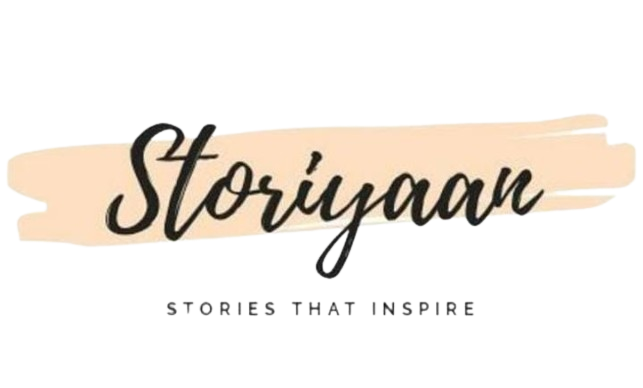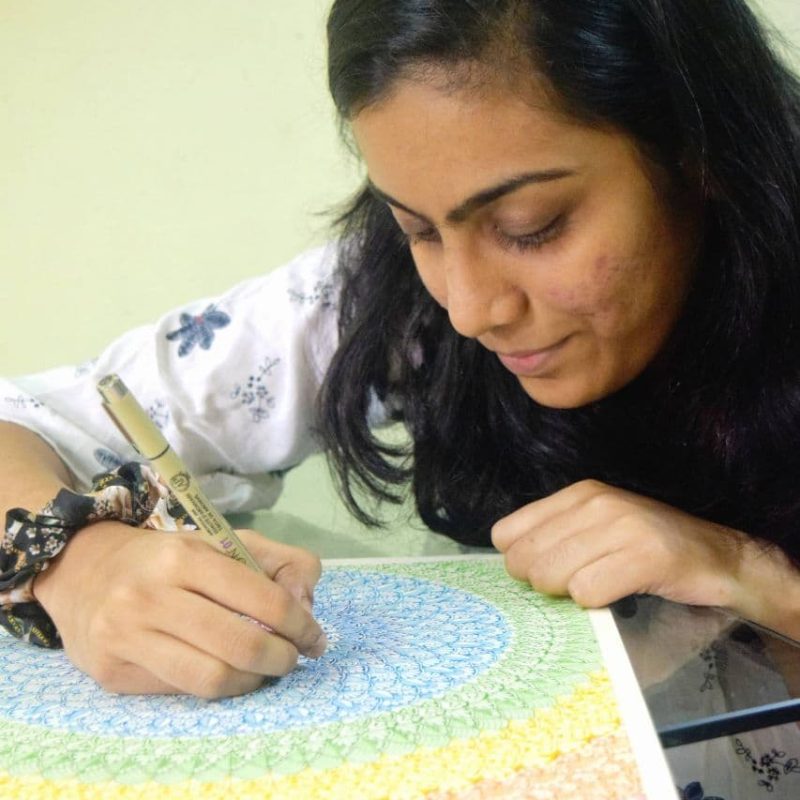How often have you been stopped and completely consumed by an art piece, which forced you to say “Wow!”? If not yet, Ashwini Nemade’s mandala paintings will surely do. A software engineer by profession and a mandala artist by soul, she discovered her love for the same, during the first lockdown. After going through a phase of lack of mental peace and stability, she feels Mandala art acted as a glimmer of hope and changed her perspective towards life.
Her drawings are mostly created using just paper and a pen, which have a story to tell and reflect the artist’s deep interest in serenity but sometime she does digital drawing using the best standalone drawing tablet. For her, the aim is to elicit an emotional response and thus, appreciate the art form.
The Mandala artist sits down to discuss her journey of turning her passion into a business, the challenges she faced, and how the art appeared as a silver lining, in this conversation with Storiyaan.

Ashwini Nemade: Art is a Therapy
Interview
Questions and answers
What made off for Mandala Art and your preferred art form during the lockdown?
When the country went under lockdown, I used to scroll through my Instagram feed, during my spare time. I came across a mandala art which was so aesthetically pleasing, that I decided to give it a try myself. I went through various YouTube tutorials and failed many times! But I knew I had to keep going as it takes many attempts to polish your skills. Feeling an instant connection with the art form, it eventually became more than just a hobby.
How does Mandala art have a spiritual impact on people who haven’t had any first-time experience?
I have often heard from my clients that they find Mandala art calm and soothing. It helps you to gather your thoughts, focus, and also alleviate stress at the same time. I love the process of making it. Drawing is time-consuming, so it gradually inculcates patience in the artist and you learn to respect the job.
You mentioned that there was a phase when you were experiencing a lack of mental peace and stability. Could you tell us about the challenges you faced?
During my graduation year, I became concerned about my career as I was not in a good position. I also felt the constant need to adapt to my surroundings so that I could fit in with my peer group. This took a toll on my mental health and I began to question my identity, my wants, and my feelings. But I suppose it does happen to everyone at one point in time, doesn’t it?
Life is not a cakewalk and we all have to fight battles that help us grow. Can you share the one incident you encountered growing up?
As I mentioned earlier, one was an identity crisis. Also, I started to mould myself into a person who would be loved by everyone. The idea of being a people person affected my thought process and I would feel the need to seek others’ approval and opinions. As I gained maturity, I realized the root cause for this was my inability to be satisfied with who I was, and people who loved me would accept and cherish me the way I am.
How did the lockdown affect your mental health and how did you cope with it?
I consider lockdown as a blessing in disguise where I learned to work on myself and indulge in new activities. It made me come face to face with my real self and incorporate various changes into my lifestyle. Owing to the restrictions on traveling, I spent time with myself, developed my skills and mindset, and worked on improving my negative traits.
How did you strike a balance between your job as an engineer and your passion for art?
I made a deal with myself that I would devote at least an hour to my hobby. Be it reading a book or sketching, I made sure I gave enough time to these activities as it helped me grow spiritually. If you have the zeal for something, you will automatically learn to balance various jobs.
When it comes to art, what are some sources you can rely on, for inspiration?
I take inspiration from nature because there are so many aspects to it. Most of my drawings are derived from nature, for example, a rainbow or a bird sitting on a tree. I see myself as a storyteller and always make an effort to speak through my art and convey a message to the audience. So, I draw what I see in my surroundings.
Tell us about the most coveted and elaborate piece from your portfolio and how long did it take you, to complete it?
The one with the rainbow, I suppose. It took me three hours daily and one and a half months to complete it. It was a cumbersome task but the drawing turned out to be my best one and was purchased by a client in the UK.
When did you come up with the idea to turn your passion for Mandala art into a business?
I believe Mandala art provides a sense of comfort and solace to the viewer, and every home should have at least one piece. This is what inspired me to create a business related to the same.
Quick 5
1. Your favorite artist– Saudamini Madra
2.Your favorite medium to draw on- On paper with a black fine line pen
3.If not an engineer or an artist, you would be a…- A fitness instructor
4.Your biggest pet peeve- I hate unpunctual individuals
5.Your life mantra- Keep embracing things as they come, as everything is temporary in life.
“‘
To Know More about Ashwini Nemade
and her experience as a an artist checkout her GetFeatured on our website itself:
Ashwini Nemade: An artistic take
”’

